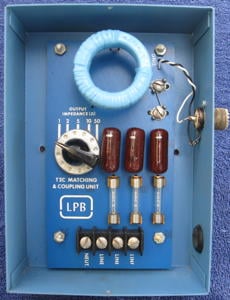A real interesting thread from back when the Schlockwood SW200 first came out that talks about it, as well as pro's and cons of using a PC with StereoTool or plugins to accomplish the same thing. It's a hardware vs software processing debate.
https://www.hfunderground.com/board/index.php?topic=49947.0 Most interesting I think is where a guy named Kage announced he was scratch building his own processor "loosely designed after the Dorrough DAP 310 from 1973", and then later came back and revived the thread with the completed schematics and video demonstration.
Something that jumped out at me is where chantino said:
Best bang for your buck using hardware, if in fact you want it to sound loud and clean, is the Aphex Compellor/Dominator combo. ... ... .. This is not going to give you a heavily. noticeably processed sound, but it will be quite, again, LOUD, but still pleasing compared to the typical flatlined mid/highs and overbearing bass commercial station...
I used that pair for years with my station and loved them, wish I still had them. I had sought them out because it was specifically advised in an article on the Rangemaster site about processing (It wasn't written by Hamilton, and he doesn't remember who wrote it). So I found one, then the other on eBay, and was immediately impressed, they made a noticeable difference, definitely better than the 421 and an equalizer I had previously used. -- But anyway, later there were numerous times that Bill over at HB had advised me to get rid of the Dominator and replace it with something else, because the Dominator was not designed for AM. I kind of figured he knew what he was talking about, but I just couldn't bring myself to change something which seemed to be performing so well.. I don't mean range really, I really don't know if it improved range or not l, but the sound quality was great, full. I really liked the Aphex Compellor/Dominator pair and am considering trying to find another set, even thought the Dominator was evidently actually designed for FM. But I'm also still considering the Schlockwood.
Incidentally, in case you haven't heard, the original Schlockwood SW200 has now been discontinued. It is being replaced within the next few months by two different models; one is a $500 professional rack mount version with more bells and whistles, but the other model, the SW210, which apparently is a SW200 with just a faceplate but no encloser, it's only going to cost about $300, and that sounds like a very inviting price to me.
https://www.schlockwood.comBut I haven't totally abandoned the idea of just using free plugins either. So I'm curious.. actually I think I know the answer already ..
How many part 15 AM stations use only software based processing?





